Bioinformatic analysis of the obesity paradox and possible associated factors in colorectal cancer using TCGA cohorts
- PMID: 36860923
- PMCID: PMC9969588
- DOI: 10.7150/jca.80977
Bioinformatic analysis of the obesity paradox and possible associated factors in colorectal cancer using TCGA cohorts
Abstract
Colorectal cancer (CRC) is a common malignancy worldwide and the second leading cause of cancer-related deaths. Obesity is an important determinant of CRC incidence; however, obese patients have also shown better long-term survival than non-obese patients, suggesting that the development and progression of CRC are associated with different mechanisms. This study compares the expression of genes, tumor-infiltrating immune cells, and intestinal microbiota between high- and low-body mass index (BMI) patients at the time of CRC diagnosis. The results revealed that high-BMI patients with CRC have better prognosis, higher levels of resting CD4+ T cells, lower levels of T follicular helper cells, and different levels of intratumoral microbiota than low-BMI patients. Our study highlights that tumor-infiltrating immune cells and intratumoral microbe diversity are major features of the obesity paradox in CRC.
Keywords: Obesity paradox; TCGA; colorectal cancer; intratumoral microbiota; tumor-infiltrating immune cells.
© The author(s).
Conflict of interest statement
Competing Interests: The authors have declared that no competing interest exists.
Figures

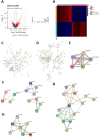
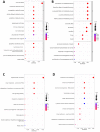
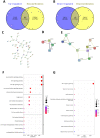
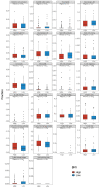
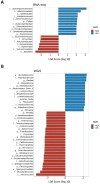
Similar articles
-
The obesity paradox in patients with colorectal cancer: a systematic review and meta-analysis.Nutr Rev. 2022 Jun 9;80(7):1755-1768. doi: 10.1093/nutrit/nuac005. Nutr Rev. 2022. PMID: 35182150
-
The Role of Autophagy in Tumor Immune Infiltration in Colorectal Cancer.Anal Cell Pathol (Amst). 2022 Mar 14;2022:2055676. doi: 10.1155/2022/2055676. eCollection 2022. Anal Cell Pathol (Amst). 2022. PMID: 35321516 Free PMC article.
-
Colorectal Cancer-Associated Immune Exhaustion Involves T and B Lymphocytes and Conventional NK Cells and Correlates With a Shorter Overall Survival.Front Immunol. 2021 Dec 16;12:778329. doi: 10.3389/fimmu.2021.778329. eCollection 2021. Front Immunol. 2021. PMID: 34975867 Free PMC article.
-
High expression of TTC21A predict poor prognosis of colorectal cancer and influence the immune infiltrating level.Transl Cancer Res. 2022 May;11(5):981-992. doi: 10.21037/tcr-21-2674. Transl Cancer Res. 2022. PMID: 35706814 Free PMC article.
-
Intestinal microbiota and colorectal carcinoma: Implications for pathogenesis, diagnosis, and therapy.EBioMedicine. 2019 Oct;48:648-655. doi: 10.1016/j.ebiom.2019.09.050. Epub 2019 Oct 17. EBioMedicine. 2019. PMID: 31631043 Free PMC article. Review.
Cited by
-
Comprehensive analysis of microbial content in whole-genome sequencing samples from The Cancer Genome Atlas project.bioRxiv [Preprint]. 2024 Aug 19:2024.05.24.595788. doi: 10.1101/2024.05.24.595788. bioRxiv. 2024. PMID: 39071384 Free PMC article. Preprint.
-
Major data analysis errors invalidate cancer microbiome findings.bioRxiv [Preprint]. 2023 Jul 31:2023.07.28.550993. doi: 10.1101/2023.07.28.550993. bioRxiv. 2023. Update in: mBio. 2023 Oct 31;14(5):e0160723. doi: 10.1128/mbio.01607-23. PMID: 37577699 Free PMC article. Updated. Preprint.
-
Triglyceride-glucose index predicts postoperative overall survival in hepatocellular carcinoma: a retrospective cohort study.Discov Oncol. 2024 Nov 13;15(1):651. doi: 10.1007/s12672-024-01541-9. Discov Oncol. 2024. PMID: 39537878 Free PMC article.
-
Influence of Biomarkers on Mortality among Patients with Hepatic Metastasis of Colorectal Cancer Treated with FOLFOX/CAPOX and FOLFIRI/CAPIRI, Including Anti-EGFR and Anti-VEGF Therapies.Medicina (Kaunas). 2024 Jun 19;60(6):1003. doi: 10.3390/medicina60061003. Medicina (Kaunas). 2024. PMID: 38929620 Free PMC article.
-
Major data analysis errors invalidate cancer microbiome findings.mBio. 2023 Oct 31;14(5):e0160723. doi: 10.1128/mbio.01607-23. Epub 2023 Oct 9. mBio. 2023. PMID: 37811944 Free PMC article.
References
-
- Aleksandrova K, Pischon T, Buijsse B, May AM, Peeters PH, Bueno-de-Mesquita HB. et al. Adult weight change and risk of colorectal cancer in the European Prospective Investigation into Cancer and Nutrition. European Journal of Cancer. 2013;49:3526–36. - PubMed
-
- Li Y, Li C, Wu G, Yang W, Wang X, Duan L. et al. The obesity paradox in patients with colorectal cancer: a systematic review and meta-analysis. Nutr Rev. 2022;80:1755–68. - PubMed
LinkOut - more resources
Full Text Sources
Research Materials

